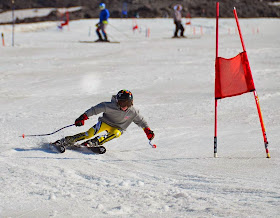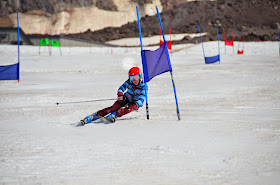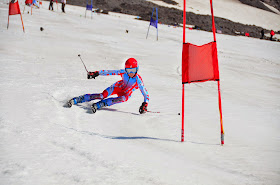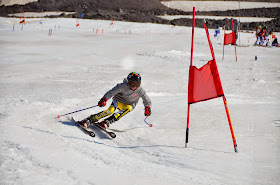There are some notions and beliefs around US Ski Coaching, that young racers who ski too well and have learned good technique; are never going to be successful fast racers, because they are over techniqued.
Sometimes I have to just shake my head in wonder at the belief systems that prevail in skiing.
The notion that good technique makes you a slow skier is not only absurd, but it's an attempt to remove the responsibility of good coaching from the coach's back.
When proper technique is coached and developed a young racer doesn't have to dwell on his skiing he can relax and ski fast without thinking. The individual and his personality traits bring the fire in the belly on race day. And if you don't have that fire naturally, you probably won't make it whether or not you have good or undeveloped technique. It's the determination and motivation that makes a skier aggressive and an attacking racer, not diminished in the slightest by his ability to ski well.
In fact, it's the opposite, the better you ski the more confidence you have to ski fast, not the other way around. Sometimes in the US we have strange ideas about what develops success.
In Austria all the racers learn to ski well and then they develop into champions, and they all "amazingly" have the same good technique. Are they over techniques? Maybe they are but they are still fast.
Below are three very fast racers with exemplary technique. When taught correctly and without technical overload or jargon, skiers don't slow down to ski well in a course; they rely on the instincts trained into their skiing movements.
In these photo you see skiers with world cup skiing. Outside ski, skeletal alignment to the forces and excellent balance.

These skiers developed these basics through exercises skiing outside of gates. This requires focus concentration and discipline. This is often not something everyone has or brings, many skiers have to learn how to focus just as they have to learn different techniques.
(Below photo) This is 10 year old Zack, he's highly focused and loves exercises that he uses to develop his skiing by training outside of gates.
A highly skilled skier always looks like they have world cup technique, doesn't matter what age.
Sometimes you have a wild and loose skier who needs to be gradually reigned in to develop enough technical ability, yet not lose that free spirited edge. Ever skier and personality is different and coaches need to realize you don't treat all racers the same way. The skier below is a free spirit, yet he now has the ski technique to also stay in the courses while skiing fast and free.




























































